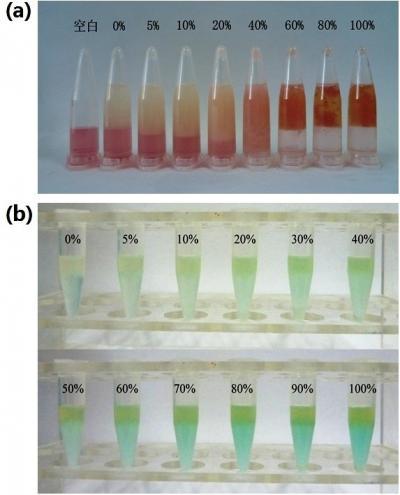Detection of illegal cooking oils in China
In recent years in China, illegal cooking oil incidents have led to serious food safety risks and negative social repercussions. The illegal cooking oils include the refined waste oil from restaurants, repeatedly used oil and waste animal fats. Because such cooking oils may contain toxic polymers, peroxide and so on, they can be dangerous to human health. The most common clinical symptoms of poisoning include headaches, vomiting and diarrhoea.
While monitoring purchase records and granting administrative licences can be used to control the problem of illegal cooking oil, a rapid and on-site detection of illegal cooking oil is still necessary and urgent in China.
Professor He Yujian and his group from College of Chemistry and Chemical Engineering, University of Chinese Academy of Sciences has established two rapid and convenient colorimetric techniques based on phase transfer technology which can be used for rapid and on-site detection of illegal cooking oils. Their work, Rapid colorimetric detection of illegal cooking oils based on phase transfer technology, will be published on SCIENCE CHINA Chemistry, 2013.
In the methods, developed copper ions and cationic gold nanoparticles protected by poly (diallyldimethylammonium) chloride (PDDA) were used as the recognition probes. And the illegal cooking oil could be detected by the naked eye (see image). The results showed that qualified cooking oil mixed with 2.8% of the illegal cooking oil could be detected, and more than 5% of the illegal cooking oil could be accurately detected by the naked eye. These methods were applied in a blind test for a total of 235 samples; the results showed that the accurate rates of the blind tests were 95.7%.

Compared with the traditional methods, this method is cost-effective and allows rapid and simple colorimetric detection of illegal cooking oils without complex pre-treatment. A national patent has been applied for.
Beany flavour study to enhance the appeal of soy-based foods
A scientific study at the University of Missouri is exploring novel ways to improve the flavour...
FCR image bank provides precise food cue feedback
GMU's Food Cue Reactivity image bank update produces more accurate and consistent...
Aust and NZ baby food nutritional claims unfounded: study
New research has shown that baby foods often feature misleading claims aimed at convincing...










